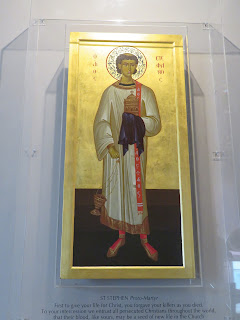 |
| Source |
From the earliest beginnings of monasticism in Western Christendom, December 26th, St Stephen's Day was the day when the alms boxes from the monasteries and churches were opened and the money given to the priest or used to help the poor and needy.
This is the origin of our "Boxing Day" Good King Wenceslas, is set on St Stephen's Day and outlines how the Catholic King of Bohemia in the 10th century made charitable attempts to give food to the poor. (Source: Ian Elmer)
In Ireland it is a good day for racing to honour the saint's role as a patron of horses. According to the good old Catholic Culture page, it was a general practice among the farmers in Europe to decorate their horses on Stephen's Day, and bring them to the house of God to be blessed by the priest and afterward ridden three times around the church, a custom still observed in many rural sections. Later in the day the whole family takes a gay ride in a wagon or sleigh (St. Stephen's ride).
In Sweden, the holy deacon was changed by early legend into the figure of a native saint, a stable boy who is said to have been killed by the pagans in Helsingland. His name — Staffan — reveals the original saint. The "Staffan Riders" parade through the towns of Sweden on December 26, singing their ancient carols in honor of the "Saint of Horses."
Another Celtic tradition of this day is that of the wren boys
Another Celtic tradition of this day is that of the wren boys
Comments